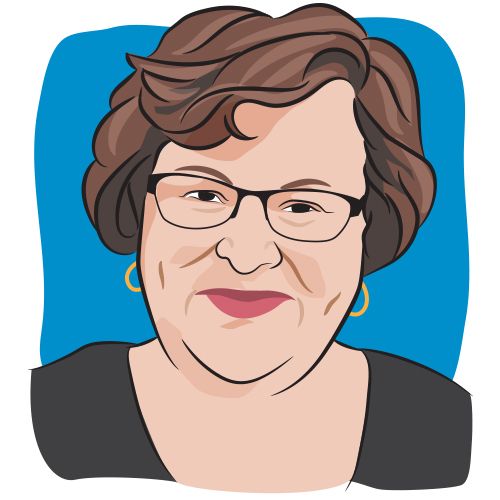Video
A Patient’s Initial Treatment for DLBCL
Loretta J. Nastoupil, MD: Brian, walk us through what your initial treatment was like.
Brian Gerberich: I did bendamustine and rituximab. I think I did four cycles, and it was uncomfortable. It could have been worse, as far as treatment. I got lot of nausea. I would typically get infusions on a Thursday, and usually by Saturday, I was down for the count and felt pretty bad, like I had the flu. And by Sunday night, Monday, I was ready to go back to work on Monday, and sometimes I would have to take Monday off because I didn’t feel well. But ultimately, it put me in remission, so we were thankful for that.
Loretta J. Nastoupil, MD: Did you pursue any maintenance therapy after the initial treatment?
Brian Gerberich: We did a two-year maintenance of rituximab after that. I was told I was in remission for two years. And then it was a few months later I had a kidney stone and went to the urologist, and he did a CT [computed tomography] scan and said, “Uh-oh, you’ve got something on your kidney.” We dove deeper into that, and then subsequent biopsies, and realized the cancer had come back.
Loretta J. Nastoupil, MD: At that point did you undergo another biopsy? What transpired?
Brian Gerberich: We did, yes. We did a biopsy. We did another liver biopsy just to be safe. We did a wedge biopsy, so a little bit more than the needle biopsy originally, and then confirmed the diagnosis that it had returned.
Loretta J. Nastoupil, MD: I’m going to clarify one thing about your specific situation. Initially, there were some concerns that this was follicular lymphoma with the initial biopsy, and that’s why you got the bendamustine and rituximab. And then at the relapse, and albeit it was a much shorter remission duration than we would have expected, a biopsy was pursued and that’s when the large cell lymphoma was first confirmed.
At that point you initiated what we call R-CHOP [rituximab, cyclophosphamide, doxorubicin, vincristine, prednisone], or sometimes patients what refer to as “the red devil” containing chemotherapy. What was that like?
Brian Gerberich: Before my first infusion, everybody kept talking about the red devil. I was a little worried about that. And it was harsher than the first round. I did lose all my hair, I definitely felt a little sicker after that, but I got through it with my chemotherapy buddy. I couldn’t have done it without her. But I responded very well to that treatment.
Loretta J. Nastoupil, MD: And then following that, you underwent stem cell transplant, is that correct?
Brian Gerberich: I did. That was kind of a tough decision. We had so many questions, and we weren’t sure that was the right path to go. And after a lot of discussion and research with my primary oncologist, we decided that it was worth doing because it had been so successful in putting this lymphoma into remission.
Loretta J. Nastoupil, MD: I know that probably at the first sign that you had the lymphoma come back, that must have been a very disappointing situation. Denise, what was your perspective on that, and what do you take away from that?
Denise Gerberich: It was definitely a shock. It was devastating because once he was in remission the first time, we were thrilled and grateful at the outcome, going through the treatment and the difficulty of that. So, it was a shock for it to return and very disappointing and upsetting, because it seemed like such a short amount of time in which he relapsed and it returned, so it definitely was a difficult time.
Loretta J. Nastoupil, MD: Brian, as you mentioned, the R-CHOP [rituximab, cyclophosphamide, doxorubicin, vincristine, prednisone] is not the easiest therapy to tolerate. What was it like hearing from the transplant team about the intensive chemotherapy that was going to follow with the transplant?
Brian Gerberich: That’s true. It was rougher than I had anticipated. I did have a lot of nausea. I had trouble, there are so many good medicines out there to control that, and it took a while for us to find the right one. But that was rough. It was nice because I was an inpatient, and so any time I complained or whined about something, the nurses were right there to help me get through that. We got through it. It wasn’t the most fun, but we got through it.
Loretta J. Nastoupil, MD: You may be even minimizing what some patients describe. How long did it really take for you to feel like you were close to normal again?
Brian Gerberich: It was about maybe three weeks to get over it. Would you say more than that?
Denise Gerberich: I would say more than that. I would say more like four months before he was back to his normal self and having more of his stamina for normal activities without tiring easily.
Brian Gerberich: That’s probably true, yes.
Transcript Edited for Clarity




